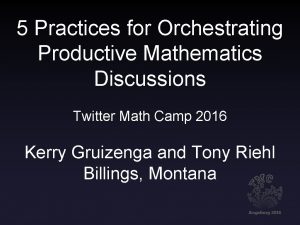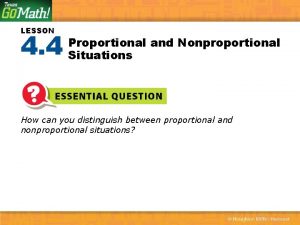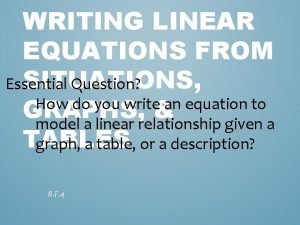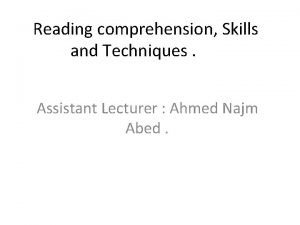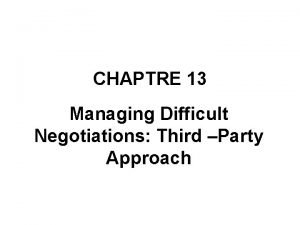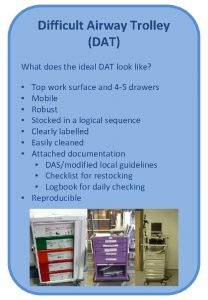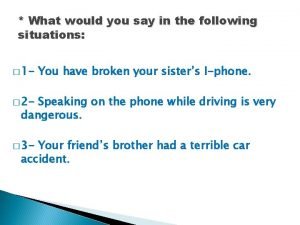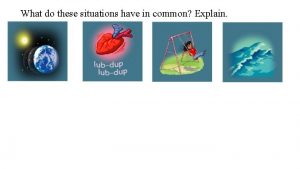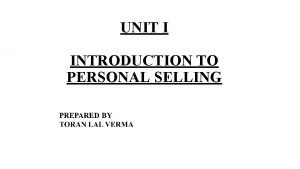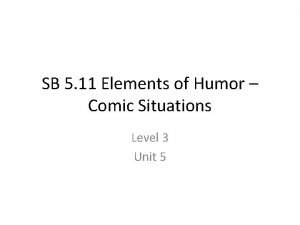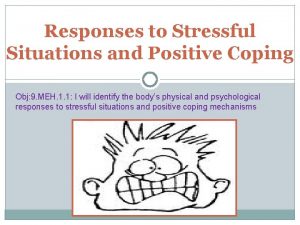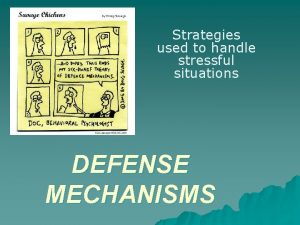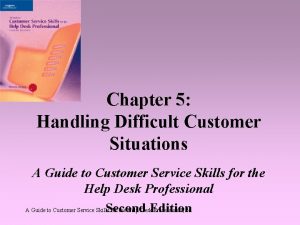GEAPS Handling Stressful Situations Difficult Discussions and Making






































































- Slides: 70


GEAPS Handling Stressful Situations, Difficult Discussions and Making Decisions

What is Stress? Three Stages of Stress Alarm – Response - Exhaustion Three Stages of Burnout Physical – Psycho - Spiritual

Physical Remedies 1. 2. 3. 4. 5. Get Organized Proper Diet Exercise Massage Relaxation Exercises

Physical Remedies (cont) 6. Deep Breathing 7. Stretching 8. Rut / Routine 9. Walking Breaks 10. Music

Physical Remedies (cont) 11. Sing 12. Hobby 13. Smile 14. Laugh 15. Date Night / Take Scheduled Time Off

Psychological Remedies 1. 2. 3. 4. 5. Think of Yourself as Self-Employed Continue Your Education Set Long Term Goals Past Accomplishments Reference Positive Visualization

Psychological Remedies (cont) 6. 7. 8. 9. Positive Affirmations Mental Vacation Alter Interpretations / At least… Understand Your Emotions Senses – Interpretation – Feeling – Options - Express 10. Controllable?

Psychological Remedies (cont) 11. Quality Time 12. Nickname 13. Contingency Plans 14. Volunteer 15. Pray

The Communication Model Message Self Other Party Feedback

The Five Laws of Communication Law #1: Communication is a Process Consistently: Appear Warm & Friendly Express Intentions and Motives Demonstrate Trustworthiness Be an Information Source Develop Relevant Expertise Project Dynamism

The Five Laws of Communication Law #2: Communication is Complex 6 Perceptions: Who I think I am Who I believe you think I am And really who you think I am Who you think you are Who you believe I think you are And really who I think you are

It may take people as little as 100 milliseconds to form an impression of another person – to decide whether he or she is attractive, trustworthy, competent and likable. That’s less time than it takes to form a rational thought.

HER DIARY: Tonight, I thought my husband was acting weird. We had made plans to meet at a bar to have a drink. I was shopping with my friends all day long, so I thought he was upset at the fact that I was a bit late, but he made no comment on it.

HER DIARY: Conversation wasn't flowing, so I suggested that we go somewhere quiet so we could talk. He agreed, but he didn't say much. I asked him what was wrong. He said, 'Nothing. ' I asked him if it was my fault that he was upset. He said he wasn't upset, that it had nothing to do with me, and not to worry about it.

HIS DIARY: My Harley wouldn't start today.

The Five Laws of Communication Law #3: Messages Not Meanings are Communicated Accuracy / Simplicity / Coherence Language Intensity / Appropriateness Statement Explanation Examples Restatement Purpose Picture Plan Part they’ll Play

While attending a marriage seminar on communication, Keith and his wife Carolyn listened to the instructor declare, “It is essential that husbands and wives know things that are important to each other. ”

He addressed the men, “Can you describe your wife’s favorite flower? ” Keith leaned over, touched Carolyn’s arm gently and whispered, “Pillsbury All-Purpose, isn’t it honey? ”

And thus began Keith’s life of celibacy.

The Five Laws of Communication Law #3: Messages Not Meanings are Communicated Accuracy / Simplicity / Coherence Language Intensity / Appropriateness Statement Explanation Examples Restatement Purpose Picture Plan Part they’ll Play

The Five Laws of Communication Law #4: One Cannot Not Communicate No matter what you say or don’t say It’s also what you say and how you say it S T A B L E

A man and a woman, who have never met before, find themselves assigned to the same sleeping room on a transcontinental train.

Though initially embarrassed and uneasy sharing a room, the two are tired and fall asleep quickly…. he in the upper bunk and she in the lower bunk…

At 1: 00 a. m. the man leans over and gently wakes the woman saying, “Ma’am, I’m sorry to bother you, but would you be willing to reach into the closet to get me a second blanket? I’m awfully cold. ”

“I have a better idea, ” she replies. “Just for tonight, let’s pretend we’re married. ” “Wow! That’s a great idea!” he exclaims.

“Good, ” she replies. “Get your own damn blanket!”

The Five Laws of Communication Law #4: One Cannot Not Communicate No matter what you say or don’t say It’s also what you say and how you say it S T A B L E

The Five Laws of Communication Law #5: Two Elements: Content and the Relationship Done – Right – Along - Appreciation

Four Intentions Get “It” Done Get “It” Right Get Along Get Appreciation

What Happens When the Intent Isn’t Fulfilled? Get “It” Done - Controlling Get “It” Right - Perfectionistic Get Along - Approval Seeking Get Appreciation - Attention Getting

What Could You Say So They Know: You’re Going to Get It Done You’re Going to Get It Right You’re Getting Along You Appreciate Them

What Happens When the Intent Isn’t Fulfilled? Get “It” Done - Controlling Get “It” Right - Perfectionistic Get Along - Approval Seeking Get Appreciation - Attention Getting

Characteristics Effective Listening 1. 2. 3. 4. 5. 6. 7. 8. 9. 10. 11. 12. 13. 14. Be M_____ Make E_____ contact Show I_____ Avoiding Distracting A_____ Demonstrate E_____ Take in the W_____ picture Ask Q_____ P________ Don’t I__________ what is being said Don’t O________ Confront your B_____ Make smooth T________ Be N_____

Fourteen Characteristics of Effective Listening 1. 2. 3. 4. 5. 6. 7. Be Motivated Make Eye contact Show Interest Avoid Distracting Actions Demonstrate Empathy Take in the Whole picture Ask Questions

Fourteen Characteristics of Effective Listening 8. Paraphrase 9. Don’t Interrupt 10. Interpret what is being said 11. Don’t Overreact 12. Confront your Biases 13. Make smooth Transitions 14. Be Natural

What Would You Say? Advising & Evaluating Analyzing & Interpreting Reassuring & Supporting Questioning & Probing Paraphrasing & Understanding

Providing Effective Feedback 1. 2. 3. 4. 5. 6. 7. Focus on Specific Behavior Keep It Impersonal Keep it Goal-Oriented Make It Well-Timed Ensure Understanding Make Sure the Behavior is Controllable Tailor the Feedback to Fit the Person

Understanding the Positive Role of Conflict Potentially Constructive Nature of Conflicts

TALK TO ME § Good meeting participants know how to get participation. § They say the right things in the right ways to invite input and keep it coming.

Leveling Exercise I __(feeling)__ When__(describe observable behavior)__ Because__(cost/gain)__

Assertive Message 1. 2. 3. 4. 5. Behavioral Description Your Interpretation Description of Your Feelings Description of Consequences State Your Future Intentions

Assertive Message Action Plan 1. 2. 3. 4. 5. Behavioral Description Your Interpretation Description of Your Feelings Description of Consequences State Your Future Intentions How do you think they will respond? Modify?

Handling Difficult Discussions 1. 2. 3. 4. 5. Warm & Cooperative Tone of Voice Repeat to Yourself: “I am Reasonable. ” Say something that doesn’t mean anything. Don’t say anything Repeat: “That’s an idea” “That’s interesting” “You’ve got a point”

Handling Difficult Discussions 6. Say: “I will need some time to think about that. ” 7. Cover your agenda. 8. Redefine winning. 9. Make being a good listener a priority. 10. Effective listening posture - STABLE

Handling Difficult Discussions 11. Focus your Attention 12. Keep an Open Mind 13. Listen to Content – not delivery 14. Use Listening Noises: “I see” “I understand” “Go on” 15. Take notes

Handling Difficult Discussions 16. Provide feedback and verify 17. Don’t Interrupt – Let them Vent 18. Use their Name to establish rapport 19. Empathize 20. Ask “What” or “How” Questions to Clarify and Solve the situation.

Handling Difficult Discussions 21. Say: “What do you mean? ” “How do you mean? ” 22. Confirm Agreements in your words 23. Use “I will” rather than “I’ll try” 24. Use “You can” to say “no” 25. Use “Will you” to gain cooperation

If you can guess the number printed inside this birthday card, you will win $100. (I’ll give you a hint. It’s between 3 and 5)

4. 358765231086564 Aww…so close!

Handling Difficult Discussions 21. Say: “What do you mean? ” “How do you mean? ” 22. Confirm Agreements in your words 23. Use “I will” rather than “I’ll try” 24. Use “You can” to say “no” 25. Use “Will you” to gain cooperation

Handling Difficult Discussions 26. Set Realistic Goals 27. Understand your emotions 28. Give the Reason first to save time 29. Laugh with them 30. In one minute I can change my attitude

Ten Most Dangerous Traps 1. Plugging In 2. Frame Blindness 3. Lack of Frame Control FRAMING

Where should we go on vacation?

What do we want our vacation to accomplish? Relaxation Adventure Low cost

Ten Most Dangerous Traps 4. Overconfidence in Judgment 5. Shortsighted Shortcuts INTELLIGENCE GATHERING

Ten Most Dangerous Traps 6. Shooting from the Hip 7. Group Failure DRAWING CONCLUSIONS

Primacy / Recency Error Emotive Language: Harvey is handsome, hardworking, conceited, intelligent and honest.

Alternatives Screening and Ranking Rules Occupation-Specific Rules

Screening and Ranking Rules Friends are visiting and you’re thinking about taking them out for dinner: Distance Price Menu

Occupation-Specific Rules “Don’t accept their first offer” “Round numbers beg to be negotiated. Odd numbers sound harder, firmer, less negotiable” Share your often quoted occupation-specific rules with your table partners:

Ten Most Dangerous Traps 8. Fooling Yourself about Feedback 9. Not Keeping Track 10. Failure Audit Dec. Mkg. Process Reviewing and Evaluating

Experience is inevitable; Learning is not

Rationalization (our original prediction was misinterpreted) and the Self-Serving Bias (Our success/skill – Our failure/bad luck)

Self-Fulfilling Prophecy: A prediction that comes true not so much because of the quality of the prediction but because of actions by someone who believed in it.

Auditing Your Decisions Process vs. Product Reevaluate Your Use of Time Framing / Intelligence Gathering / Coming to Conclusions / Learning from Experience Grade Yourself on the 10 Decision Traps

Practical Decision-Making Process 1. Define Problem, Situation, Opportunity 2. State Objectives – absolute/relative 3. Restate the Objective – several versions? 4. Gather and Evaluate Data

Practical Decision-Making Process 5. Develop Alternatives logical/creative/unique? 6. Assess Alternatives - screening 7. Action and Controls – who/what/information/action/adj.

In one minute I can change my attitude and in that minute change my entire day. If I was an actor, I would get paid to play a role. At work I get paid to play a role.

 Speaking and listening: effective group discussions
Speaking and listening: effective group discussions While taking a difficult test cindy muscles
While taking a difficult test cindy muscles Classroom discussions in math
Classroom discussions in math 5 practices for orchestrating productive math discussions
5 practices for orchestrating productive math discussions War making and state making as organized crime
War making and state making as organized crime Making inferences
Making inferences Lesson 4 proportional and nonproportional relationships
Lesson 4 proportional and nonproportional relationships A camp charges families a fee of $625
A camp charges families a fee of $625 4.4 proportional and nonproportional situations
4.4 proportional and nonproportional situations 5-1 writing linear equations from situations and graphs
5-1 writing linear equations from situations and graphs Present continuous changing and developing situations
Present continuous changing and developing situations Giving advice situations
Giving advice situations What makes a good college application
What makes a good college application Why software difficult to build
Why software difficult to build Beaumol
Beaumol The reason the way of the transgressor is hard
The reason the way of the transgressor is hard It is easy to forget how difficult life was 50 years ago.
It is easy to forget how difficult life was 50 years ago. Tell me all about this name that is difficult to say
Tell me all about this name that is difficult to say English paragraph for reading
English paragraph for reading Momentum is a measure of how difficult it is to
Momentum is a measure of how difficult it is to Crucial conversations make it safe
Crucial conversations make it safe Difficult conversations role play scenarios
Difficult conversations role play scenarios Difficult conversation preparation worksheet
Difficult conversation preparation worksheet Managing difficult negotiations
Managing difficult negotiations The most difficult persuasive task is to
The most difficult persuasive task is to How difficult can this be
How difficult can this be Why is city driving more difficult
Why is city driving more difficult Economics unit 1 lesson 2 difficult choices
Economics unit 1 lesson 2 difficult choices Lower segment caesarean section slideshare
Lower segment caesarean section slideshare Types of difficult conversations
Types of difficult conversations Why was italian unification difficult to achieve
Why was italian unification difficult to achieve Cricothyroidotomy
Cricothyroidotomy Seas application due date
Seas application due date Dealing successfully with difficult changes in your life.
Dealing successfully with difficult changes in your life. Use sparingly as it is difficult to untie after tightening
Use sparingly as it is difficult to untie after tightening How to deal with difficult people
How to deal with difficult people Difficult
Difficult Ideal dat
Ideal dat What is software difficult to build
What is software difficult to build Special entry access scheme (seas)
Special entry access scheme (seas) Difficult or impossible to understand
Difficult or impossible to understand How to solve exponential equations with different bases
How to solve exponential equations with different bases Shakespearean language
Shakespearean language Difficult words to spell
Difficult words to spell List three strategies for handling anger in a healthful way
List three strategies for handling anger in a healthful way Forecasting is difficult especially about the future
Forecasting is difficult especially about the future Direct idioms
Direct idioms Difficult customer scenario
Difficult customer scenario Tabitha espina
Tabitha espina Dealing successfully with difficult changes in your life
Dealing successfully with difficult changes in your life One of the 최상급 복수명사
One of the 최상급 복수명사 Difficult airway algorithm asa
Difficult airway algorithm asa Exercise on tag questions
Exercise on tag questions Difficult prepositions
Difficult prepositions Things i find difficult
Things i find difficult Bad的superlative
Bad的superlative English is not so difficult as
English is not so difficult as The difficult path analysis
The difficult path analysis Did paris love juliet
Did paris love juliet Education outside the classroom
Education outside the classroom Difficult volunteers
Difficult volunteers Write a suitable ending to the following situation
Write a suitable ending to the following situation What do you they have in common explain
What do you they have in common explain Define personal selling
Define personal selling Unchanging situations examples
Unchanging situations examples Comic situation
Comic situation Analyse du chapitre 49 le dernier jour d'un condamné
Analyse du chapitre 49 le dernier jour d'un condamné 2. how can you best use the ipde process in city driving?
2. how can you best use the ipde process in city driving? Scope of decision making
Scope of decision making The way you view situations
The way you view situations Arrangement of the elements of curriculum is known as
Arrangement of the elements of curriculum is known as



